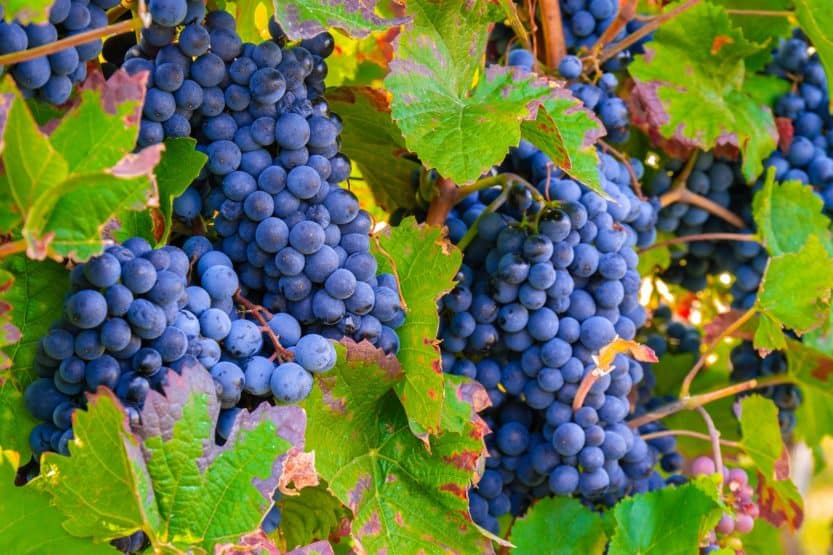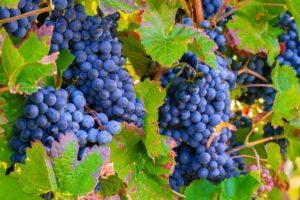Whether you’re a seasoned gardener or just exploring the idea of growing your own vines, understanding the grape harvesting process can enhance your experience and ensure a bountiful yield.
Know When to Harvest
The first step in harvesting grapes is to determine the right time. Grapes don’t ripen all at once, and timing can significantly influence the flavor, sugar content, and overall quality of the fruit. Here are some key indicators to watch for:
Color Change: Most grape varieties will change color as they ripen. For red grapes, look for a darkening of the skin, while white grapes will appear more golden.
Taste Test: The best way to check ripeness is to taste the grapes. A balanced sweetness, coupled with a hint of acidity, indicates they are ready for harvest.
Texture and Firmness: Ripe grapes will be plump and firm to the touch. Gently squeeze a few to get a sense of their readiness.
Seeds: As grapes ripen, their seeds will also mature. For black grapes, mature seeds turn brown, while for green varieties, they become more opaque.
Typically, late summer to early fall is the ideal harvesting period, but this can vary based on your climate and grape variety.
Preparing for Harvest
Once the decision is made to harvest, preparation is key to ensuring the process goes smoothly. Here are steps you can take before you start your harvest:
Gather Supplies: You’ll need a few essential tools such as:
Sharp garden shears or grape scissors
A bucket or basket to collect the grapes
A pair of gloves to protect your hands
A ladder (if necessary) for reaching higher bunches
Choose the Right Time of Day: Harvesting in the early morning or late afternoon is ideal. The cooler temperatures help preserve the grapes’ integrity and reduce the risk of damage or spoilage.
Inspect Your Vines: Before cutting, look over the vines for any signs of pests or disease. Remove any sections that appear unhealthy.
Harvesting Techniques
When it’s time to collect your grapes, a gentle approach is best. Here’s how to effectively harvest:
Cut the Clusters: Instead of pulling grapes from the vine, cut the entire cluster. This minimizes damage to the fruit and vine. Make clean cuts to avoid tearing.
Handle with Care: Grapes are delicate; be gentle as you transfer them to your container. Avoid overfilling your baskets, which can crush the grapes at the bottom.
Separate and Sort: After gathering, take a moment to sort through your harvest. Remove any damaged or underripe grapes. This step is crucial, especially if you plan to make wine or preserve them.
Post-Harvest Handling
Once you’ve harvested your grapes, handling them properly ensures they remain fresh and flavorful:
Storage: If you’re not using the grapes immediately, store them in a cool, dry place. For longer preservation, consider refrigeration, but avoid washing them until you’re ready to use.
Processing: If you’re making wine or preserves, follow your specific recipe for immediate results. Fresh grapes are also perfect for snacking, salads, or baking.
Common Mistakes to Avoid
There are a few pitfalls to watch for during the grape harvesting process:
Waiting Too Long: Overripe grapes can attract pests and have diminished flavor. Keep a close eye on your vines as they approach ripeness.
Neglecting Cleanliness: Always use clean tools and containers. Dirt or mold can spoil your entire harvest.
Ignoring Local Conditions: Factors like rainfall, temperature, and local pests can all affect the timing and success of your grape harvest. Stay attuned to your specific environment for best results.
Conclusion
Harvesting grapes can be a rewarding experience that connects you with nature’s cycles and provides you with delicious fruits to enjoy. With the right knowledge and techniques, you can maximize your yield and savor the fruits of your labor.
As you harvest, remember to appreciate the beauty of the vine and the satisfaction of your hard work. Whether you’re making wine, preserves, or simply enjoying them fresh, harvested grapes are a celebration of what you can achieve.





